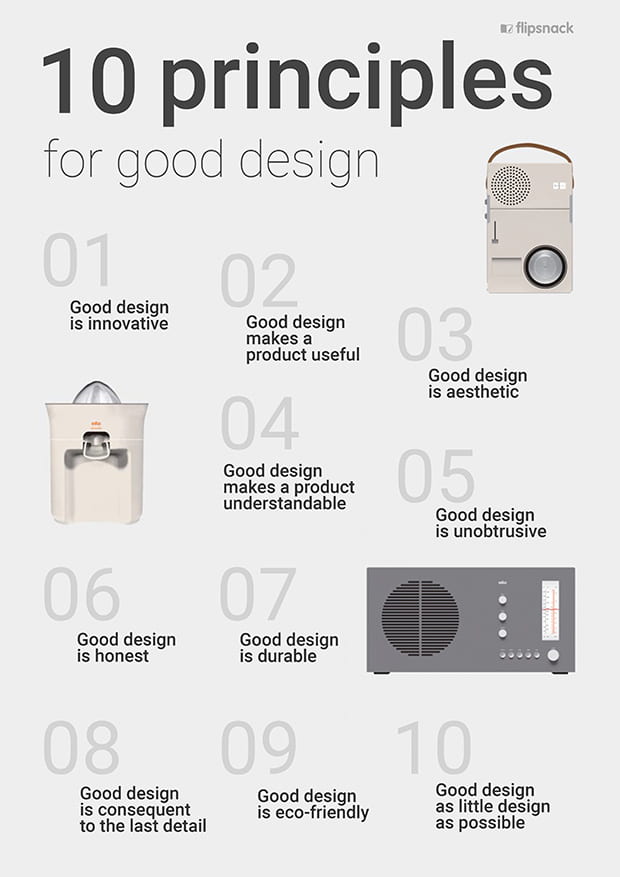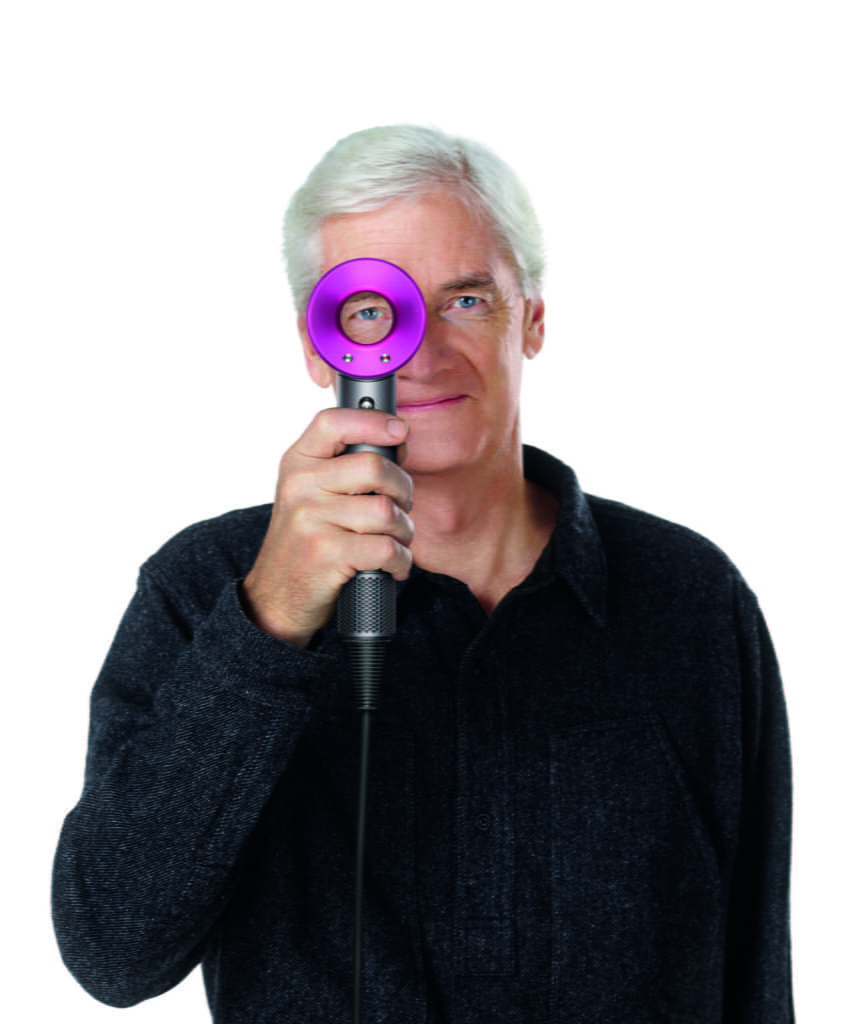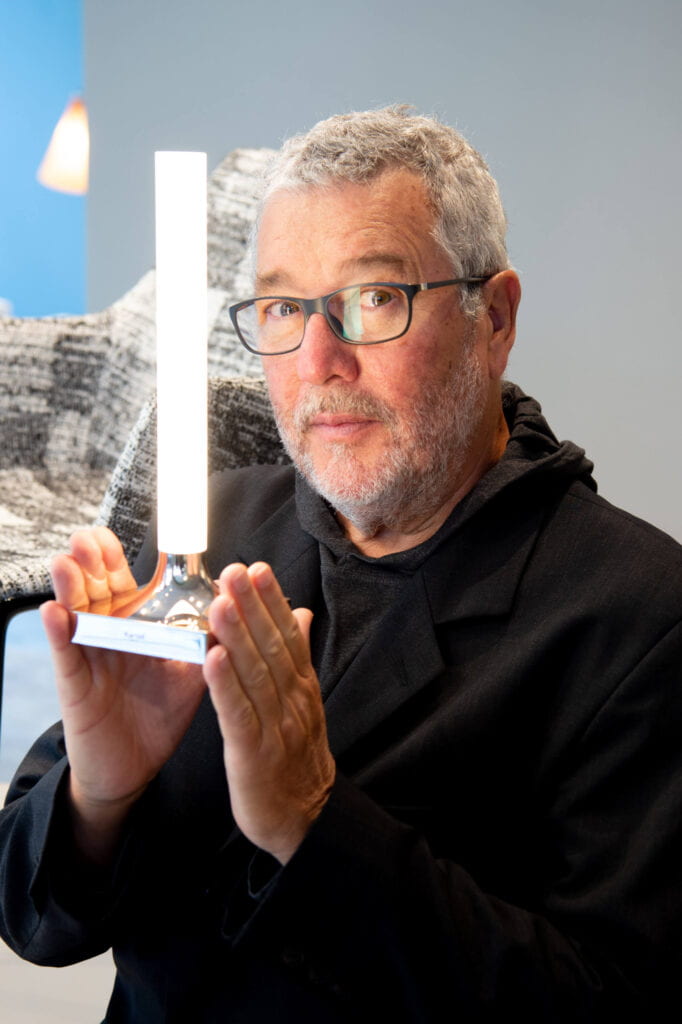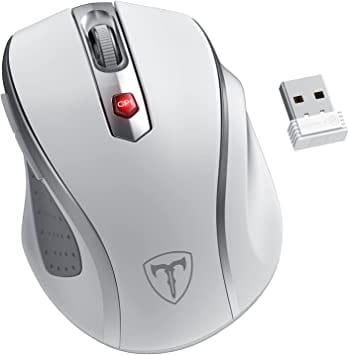
As mentioned in a previous blog post, both Philippe Starck and James Dyson are very different in their “design thinking”. Both take everyday products and turn it into something cool, but Starck’s designs are somewhat impractical with an artistic intention while Dyson’s designs are logically created with an intention to solve a certain problem. In terms of Rams’ 10 Principles of Good Design, I feel like Dyson checks off most, if not all, of the principles. Starck also does have good design principles in his works, but I think the one principle that throws people off is how understandable (or not) of some of his products, like Hot Berta and Alessi Lemon Squeezer.
 Looking at Dyson’s designs, the first thing that comes to mind when I see his products is that they’re minimal, innovative, and durable. After using both the Dyson hair dryer and the Dyson vacuum, I feel like they both check off all of the principles. One principle that I think Dyson does really well with is “good design is consequent to the last detail”. For instance, I was using the hair dryer the other day and I noticed a light flashing at the bottom of the handle. This meant that the filter needed to be cleaned, and the material for cleaning it is provided in the kit. This was something that I never had to do with a $30 Conair hair dyer, and I never really noticed how much dust collects. So the design of the Dyson hair dryer really takes into account for these small details.
Looking at Dyson’s designs, the first thing that comes to mind when I see his products is that they’re minimal, innovative, and durable. After using both the Dyson hair dryer and the Dyson vacuum, I feel like they both check off all of the principles. One principle that I think Dyson does really well with is “good design is consequent to the last detail”. For instance, I was using the hair dryer the other day and I noticed a light flashing at the bottom of the handle. This meant that the filter needed to be cleaned, and the material for cleaning it is provided in the kit. This was something that I never had to do with a $30 Conair hair dyer, and I never really noticed how much dust collects. So the design of the Dyson hair dryer really takes into account for these small details.
Another principle that Dyson demonstrates is “good design is innovative”. The video on James Dyson explaining his new vacuum cleaners shows how he keeps improving it with new functions that cheaper vacuums don’t take into consideration. For instance, the anti-hair tangle is a problem that many people face with vacuum cleaners, but no vacuum cleaner had a solution for it. Moreover, the Dyson vacuum was the first vacuum with no bag and no cord.
 As for Philippe Starck, again the one principle that makes his designs perhaps “mediocre” is the fact that they’re not understandable. The first two products that come two mind are Hot Bertha and Alessi. Both these products had people confused and some reviews say how they weren’t really practical in the usage. In the case of Hot Bertha, less was not better. Then again, these products were created over 30 years ago, so if we look at his more recent designs, they aren’t as impractical. The candle light is a simple and sleek design that’s easy to understand and aesthetic.
As for Philippe Starck, again the one principle that makes his designs perhaps “mediocre” is the fact that they’re not understandable. The first two products that come two mind are Hot Bertha and Alessi. Both these products had people confused and some reviews say how they weren’t really practical in the usage. In the case of Hot Bertha, less was not better. Then again, these products were created over 30 years ago, so if we look at his more recent designs, they aren’t as impractical. The candle light is a simple and sleek design that’s easy to understand and aesthetic.
If we were to compare and contrast Starck with Dyson, both do design with a “less is better” mindset. This makes their products look minimal and sleek as opposed to the super colorful and abstract designs in the 70s and 80s. I believe both Starck and Dyson were designing in the 80s, so like Rams, I feel like they were at the center of modern design. Starck does say his work is “democratic design”, so essentially both are designing for people. However, I still think that Philippe Starck designs with an intent to tell a narrative with his works while James Dyson designs to solve problems and make life easier/more efficient.
A Product in My Life

This desk vacuum is a product that I received as a gift recently and I use quite often, especially after written exams where I have eraser shavings everywhere. I’m not really sure if it’s considered innovative, but it one of those products that you don’t really need but it’s useful. I feel like it’s a clean and simple design and very straightforward in its functions. But one thing that I don’t really like about this design is the emptying out of the trash collected. Basically, you have to pull the top off with some force and sometimes the crumbs or dust fall out. The filter is also not really attached, so if you were to pour the trash directly into a trashcan you have to make sure to remove the filter, or else it will be thrown away as well.
Overall, I do like the aesthetics of it and it does its job. I haven’t used it for long, so I don’t know how durable it is. I think it would be interesting if Dyson made a desk vacuum, but it would probably be insanely expensive.
____
Honorable mention product:
